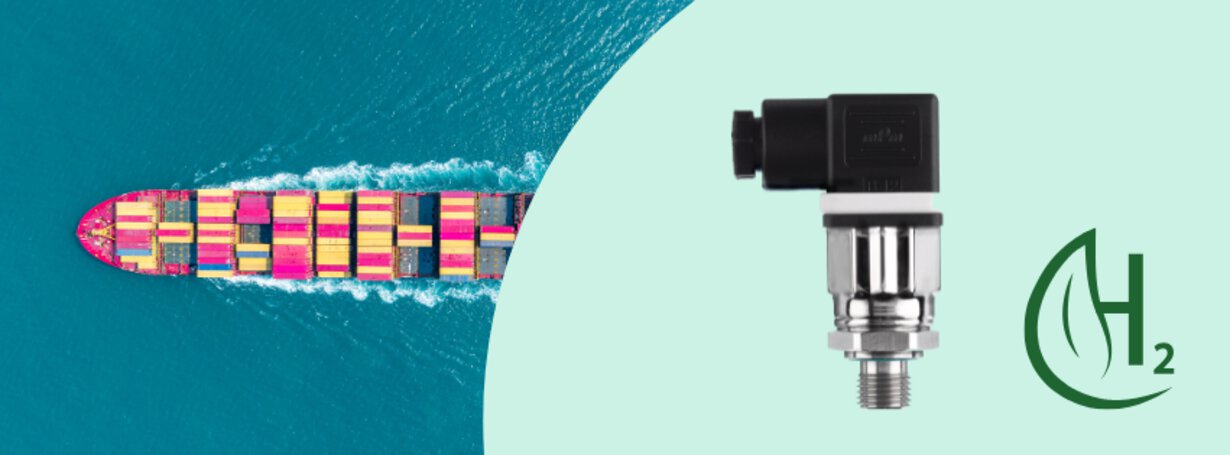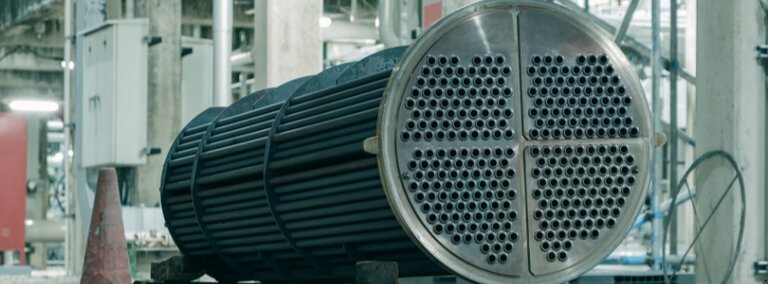

How is hydrogen changing ship propulsion? Fuel cells in maritime transport
The shipping industry faces a major challenge: how to reduce CO₂ emissions without compromising on reliability and propulsion efficiency? With stricter regulations and growing expectations for sustainable maritime transport, hydrogen technologies are attracting increasing attention. Fuel cells, especially in the PEM variant, are becoming a viable alternative to traditional combustion engines. In this article, we look at how this technology is being used in modern vessels, including passenger ships, and what role measurement and automation systems play here, from hydrogen pressure monitoring to integration with cooling and power supply.
How to reduce emissions in maritime transport without compromising efficiency? Customer challenge
Reducing greenhouse gas emissions has become one of the top priorities in transport, including maritime transport. Regulatory requirements, such as the IMO 2050 strategy, set ambitious but necessary targets for reducing environmental damage: a 40% reduction in CO₂ emissions by 2030 and as much as 70% by 2050 (compared to 2008 levels). For shipbuilders and fleet operators, this means the rapid implementation of low-emission propulsion systems.
Many solutions, such as battery engines and synthetic fuels, still have limitations in terms of range, cost, or infrastructure. Therefore, fuel cell propulsion is gaining increasing interest, especially in combination with hydrogen as an energy carrier. However, the implementation of this technology requires a reliable automation system: for hydrogen pressure control, process temperature control, and energy and cooling management.
Our customer is a manufacturer of modern passenger vessels. They were looking for a solution that would enable the integration of a fuel cell-based power supply system while maintaining high standards of safety, precision, and compliance with maritime standards.
How to integrate fuel cells into a marine automation system? Support for hydrogen propulsion
In order to enable the safe and effective implementation of fuel cell technology on a vessel, it was necessary to design an automation system capable of monitoring key hydrogen parameters and ensuring precise control of the cell's operating conditions. The customer decided to use PEM (proton exchange membrane) fuel cells, which generate electricity based on the reaction of hydrogen with oxygen. The system had to enable continuous monitoring of the hydrogen circuits, cooling and auxiliary systems, in compliance with marine standards.
Pressure and temperature monitoring in the hydrogen circuit
The project involved the modernization of the automation system for modern vessels to be equipped with fuel cells with a capacity of up to 1 MW. The customer wanted to implement a propulsion system that complies with IMO requirements and to become independent of fossil fuels such as natural gas. The technology used was to be based on the use of alternative energy sources, including green hydrogen, converted directly into electricity in the fuel cell.
Hydrogen, as a highly reactive element, requires precise control, especially in terms of pressure and temperature. JUMO MIDAS S07 MA sensors, designed for marine applications, were used to monitor the hydrogen system. The sensors monitor, among other things, the pressure before and after the hydrogen refueling stage, and their signals are integrated into the control system.
Temperature and level transmitters have been installed in the cooling system to support cell operation control. Such a system not only increases safety but also enables full control over the process, reducing the risk of emissions of environmentally harmful substances. For a customer in the Polish shipping industry, this meant not only compliance with regulations, but also a real transition to fuel cells as a source of zero-emission propulsion.
Insert your Text here.

This is the image-description
About the author
My name is Ewelina Szmit and I have been working in content marketing for several years, combining my professional skills with my passion for writing. I am convinced that even the most technical topics can be presented in an interesting and accessible way for everyone. Outside of work, I unleash my creativity by creating newspaper collages. I like to spend my free time being active, walking my dog or running.
Your contact person

Sales Engineer
Katarzyna Tracz +48 71 339 32 86 katarzynatracz.jumo@net +48 71 339 32 86Comments
We encourage you to leave your comments via the form below. They will be posted online once they have been approved through our review process.


